This post has not been edited by the GamesBeat staff. Opinions by GamesBeat community writers do not necessarily reflect those of the staff.
The quintessential paper plane simulator, John Calhoun's shareware classic Glider first emerged in 1988 "for all Macs." Its basic premise involved the player guiding a paper plane through 15 rooms, while avoiding obstacles (including a cat) and keeping the "glider" airborne, with the help of upward air movement from vents. Subsequent versions added new rooms, features, and obstacles, but the gameplay remained essentially the same.
Glider's simple mechanics and undeniable charm spawned a dedicated fan community — consisting mostly of modders, who created new levels or "houses" for the game. There was even a fanzine for a few years in the mid-90s.
But I'm not here to write about that. I want to share with you my experience of playing this little classic that nearly every Mac gamer had at least seen, if not played, but few others even knew existed. This charming, beautiful game that holds its own against bigger, more aggressive titles has been hidden too long. Join me in exploring the magical world of Glider PRO.
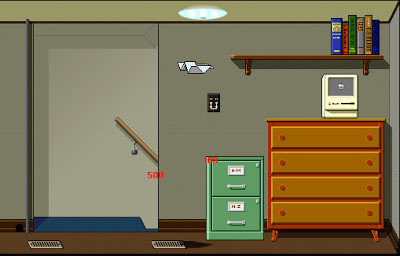
Finding the Magic
 The way Glider PRO feels is what really makes it special for me. It harks back to a time when the Macintosh was friendlier, more reassuring, and somehow naive. Back then, Macs started up with a smiley faced Macintosh and the message "Welcome to Macintosh." The operating system crashed on a semi-regular basis, but at least it told you, presenting a vague error message accompanied by a cute bomb logo and a restart button. This is in stark contrast to Windows, which merely displayed a blank blue screen — not-so-affectionately called the Blue Screen of Death — when it crashed. There was even a "Special" menu in the finder. Using a Mac felt somehow magical — playing Glider PRO feels the same way.
The way Glider PRO feels is what really makes it special for me. It harks back to a time when the Macintosh was friendlier, more reassuring, and somehow naive. Back then, Macs started up with a smiley faced Macintosh and the message "Welcome to Macintosh." The operating system crashed on a semi-regular basis, but at least it told you, presenting a vague error message accompanied by a cute bomb logo and a restart button. This is in stark contrast to Windows, which merely displayed a blank blue screen — not-so-affectionately called the Blue Screen of Death — when it crashed. There was even a "Special" menu in the finder. Using a Mac felt somehow magical — playing Glider PRO feels the same way.
It has a sense of whimsy and wonder helped in no small part by its bright, colourful graphics, and upbeat music. More than these elements, though, the magic comes from playing the game itself. It makes the mundane seem exciting; the ordinary magical. Glider somehow makes it exciting to just explore the rooms in a house.
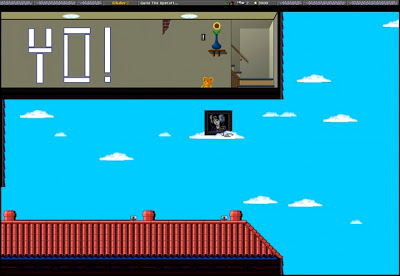
You can flip switches that turn on lights or fans, or that start up the Macintosh Plus found in some rooms. And sometimes you come across a shredder or a faulty power point/socket, which threatens the well-being of your glider. Enemy paper airplanes and helicopters, fish erratically jumping out of their bowls, basketballs bouncing of their own accord, bread hopping in and out of a toaster, leaking ceilings, and balloons rising out of the floor complete the list of unorthodox obstacles. But you are seldom under any real pressure to escape the clutches of these bad guys. More often than not you can take your time to plot out a strategy or wait for an opening.
This is both supported and hindered by perhaps the most unnecessary inclusion in Glider PRO: power-ups. There are rubber bands that can be flung at enemies or switches, sheets of foil that strengthen your glider, batteries that let you travel faster, and helium canisters that allow you to rise upwards without the help of air currents. But except for a few instances where their place in a level offers some truly inspired design, these power-ups do little to enhance the experience. The traditional focus of Glider's gameplay was on avoiding obstacles with good timing and clever use of air currents. The power-ups can at times enhance gameplay, but in general they take away from the elegance of Glider's simple design.
I never felt like I was missing out on the raft of PC titles my friends were playing back in the mid-90s. I'll be talking about that more in a future post, but suffice to say that Glider is a large part of the reason why I thought that I was getting the better experience. It had the kind of originality that I just wasn't seeing in PC releases. Now I know that isn't strictly true — there were plenty of highly original PC games released in the first half of the 1990s — but to a kid just starting primary school (that's what we call elementary school in Australia) it was clear-cut. If you wanted variety in your gaming experience, there was no better place than the Macintosh. I believed that with all my heart. (This is mostly because there were comparatively few games on the Mac, so your chances of stumbling on something good and different were much greater.)
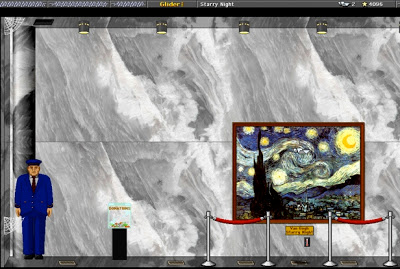
Where else can you explore a space station, an art museum, a supermarket, a house, the titanic, and an abstract world of computers on rooftops and basketballs bouncing all on their own? Glider was like nothing else.
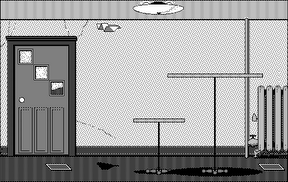 I discovered Glider 3 in 1992, when I was five years old. I didn't spend much time with the game, since it was hard and I was more interested in playing SimCity, SimAnt, At The Carnival, and the incredibly difficult but brilliant Dark Castle. Then there were the handful of Game Boy games I owned — Tetris, Tennis, Golf, Battletoads, and a couple of others. Glider didn't get much notice, frankly, because I was too busy losing myself in other games. But somehow it stuck with me.
I discovered Glider 3 in 1992, when I was five years old. I didn't spend much time with the game, since it was hard and I was more interested in playing SimCity, SimAnt, At The Carnival, and the incredibly difficult but brilliant Dark Castle. Then there were the handful of Game Boy games I owned — Tetris, Tennis, Golf, Battletoads, and a couple of others. Glider didn't get much notice, frankly, because I was too busy losing myself in other games. But somehow it stuck with me.
A couple of years later I moved on to Glider 4, which I later learned was the only game in the series that got a Windows release. And I must confess, that is actually where I first played it. My brother had started Year 7 at a private school, and that meant he got a laptop. It was a pretty crappy machine without even a colour display, but I was obsessed with playing games on it whenever he would let me. One day he put Glider 4 on there, and I was hooked. I found Glider PRO on our Mac, and proceeded to play it incessantly.
I've come back to it every few years since then. To this day I consider Glider PRO one of my favourite games, and also one of the most original concepts I've ever seen.
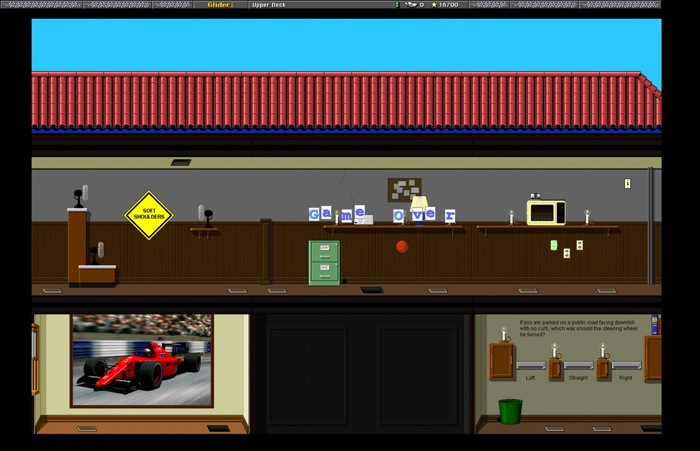
Parts of this article were lifted directly from an article I wrote on MacScene.
